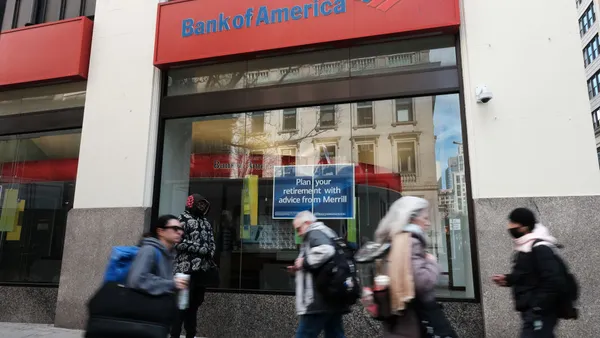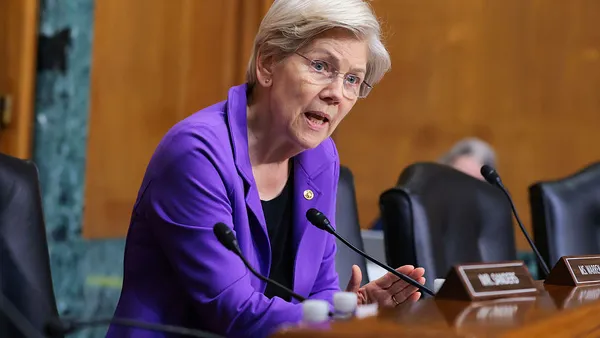Dive Brief:
- Core deposit growth is the greatest challenge facing the 571 community bankers surveyed by the Federal Reserve, Conference of State Bank Supervisors and Federal Deposit Insurance Corp. in a poll released this week.
- Cybersecurity presents the greatest risk, with nearly 71% of survey respondents calling it "very important" and 26% characterizing it as important. Credit risk ranks second, with 84% saying it is important or very important.
- Community bankers were much less concerned about the cost or effect of regulation than in past years. About 16% of respondents ranked regulation as the greatest challenge, down from 60% in 2016. Although 43% said they expected the regulatory burden to increase in the next year, only 4% cited regulation as a cost most likely to influence future profitability.
Dive Insight:
The three regulators' survey illustrates a shift in focus among community bankers from regulation to funding. About 23% of respondents listed deposit growth as their top challenge, compared with the 16% who said regulation was paramount.
Liquidity risk appeared to be top of mind for many community bankers. About 58% rated it important or very important, with 25% calling it moderately important. "That is a sharp contrast from 10 years ago, when bankers wondered what they were going to do with all their liquidity," Andrew Meyer, a senior economist at the Federal Reserve Bank of St. Louis, said in presenting the survey's findings, according to American Banker.
About 35% of respondents said the cost of funds would have the biggest influence on profitability. Loan demand ranked second at 32%.
Plus, nearly 72% of respondents viewed the adoption of new or emerging technologies as very important or important.
Merger and acquisition activity appears to be on the upswing in the sector, with 14.4% of banks saying they had received an acquisition offer in the past year. That compares with 13% in 2018 and 11% a year earlier. Additionally, nearly a quarter (24.8%) of banks said they had made an acquisition offer to another institution within the past year. That's up from less than 20% in 2017 and 2018.












